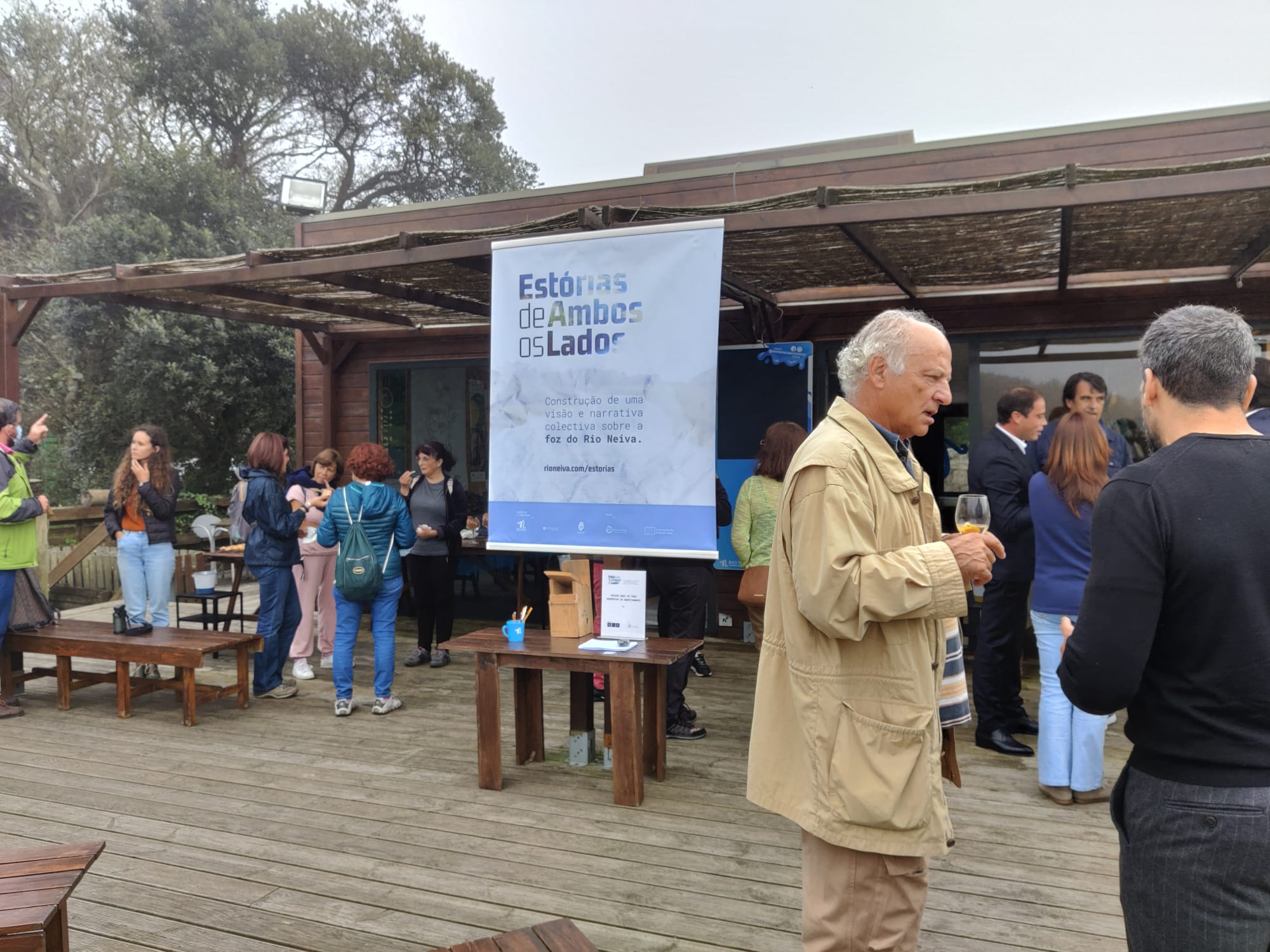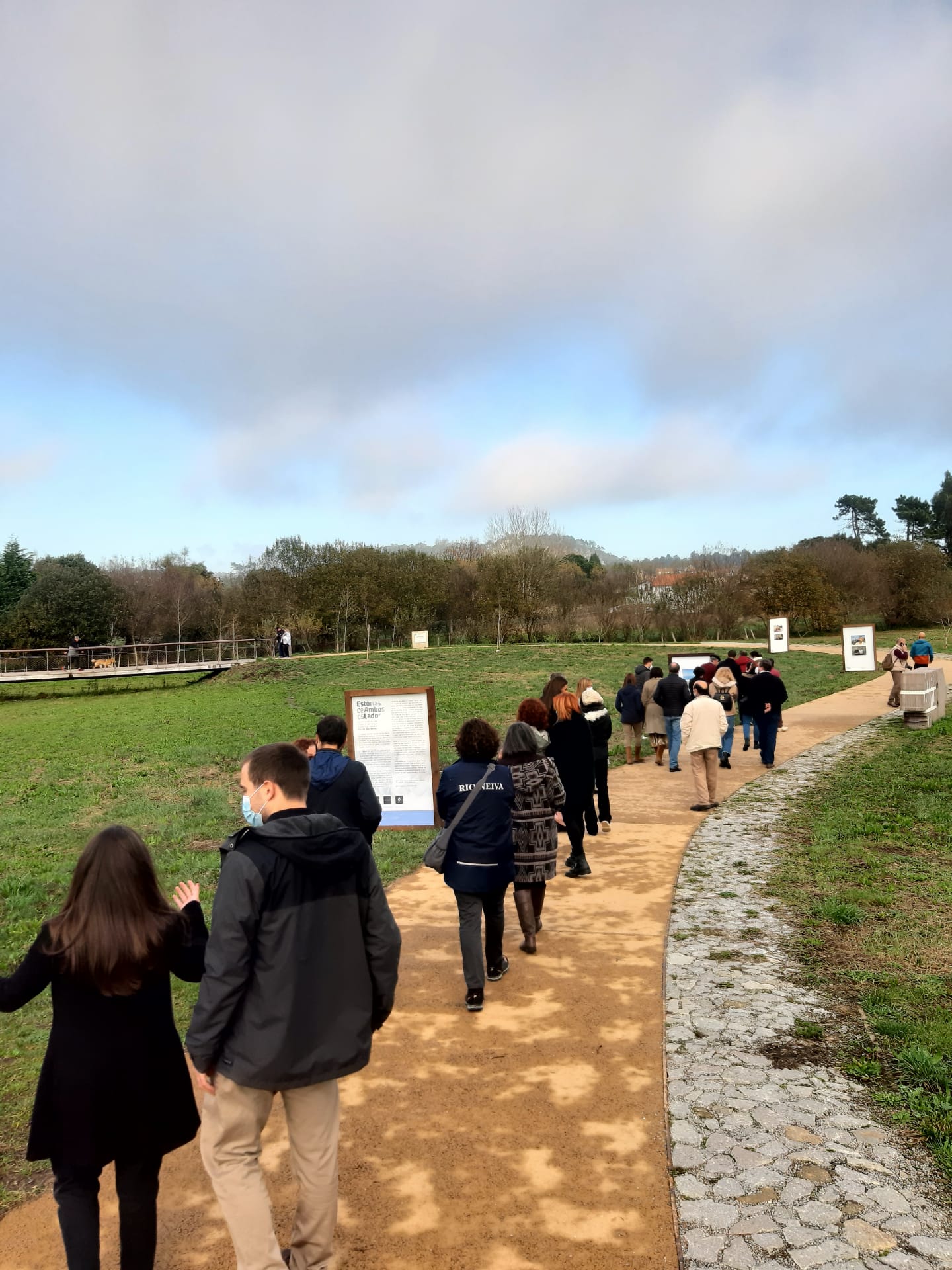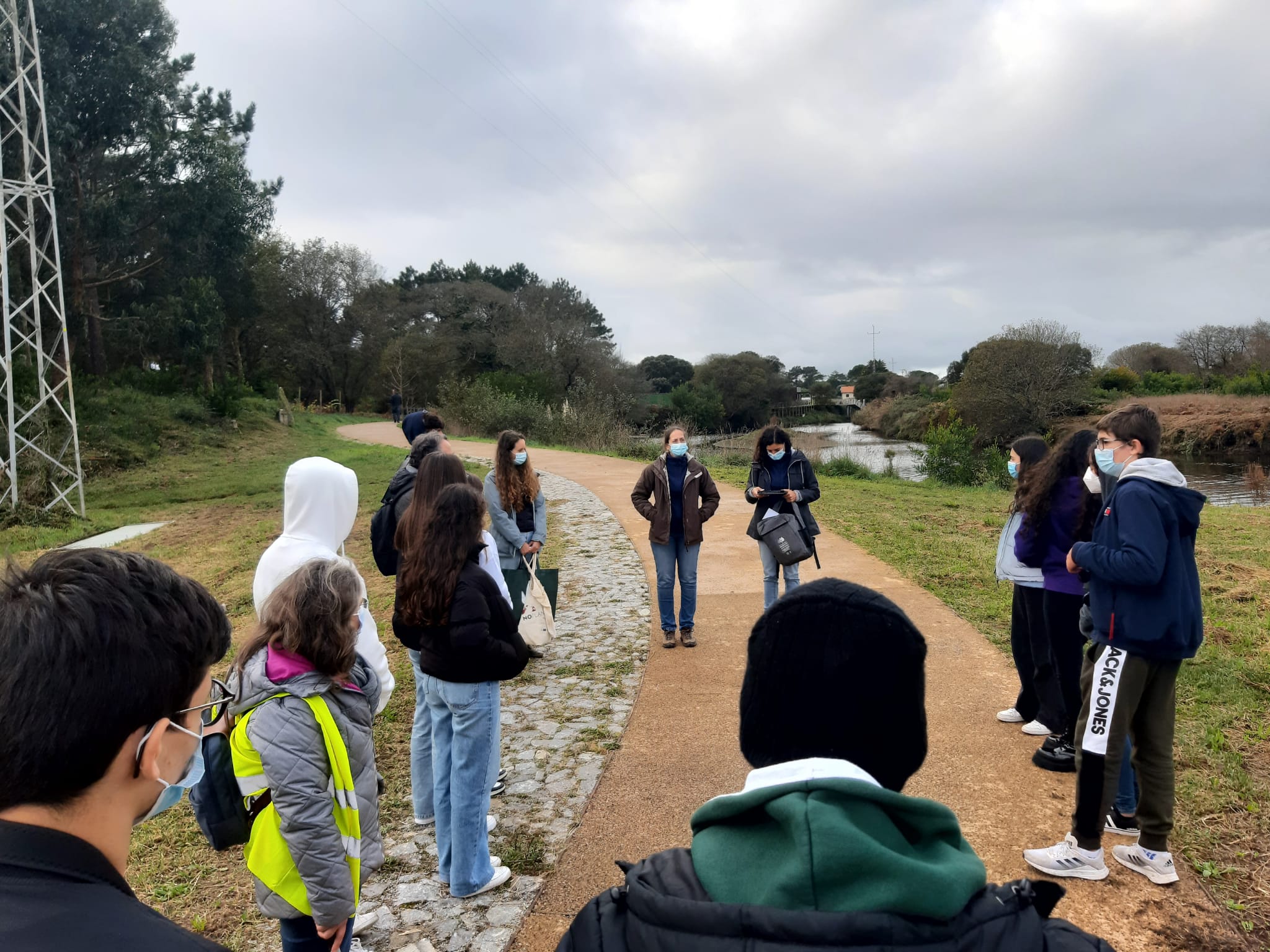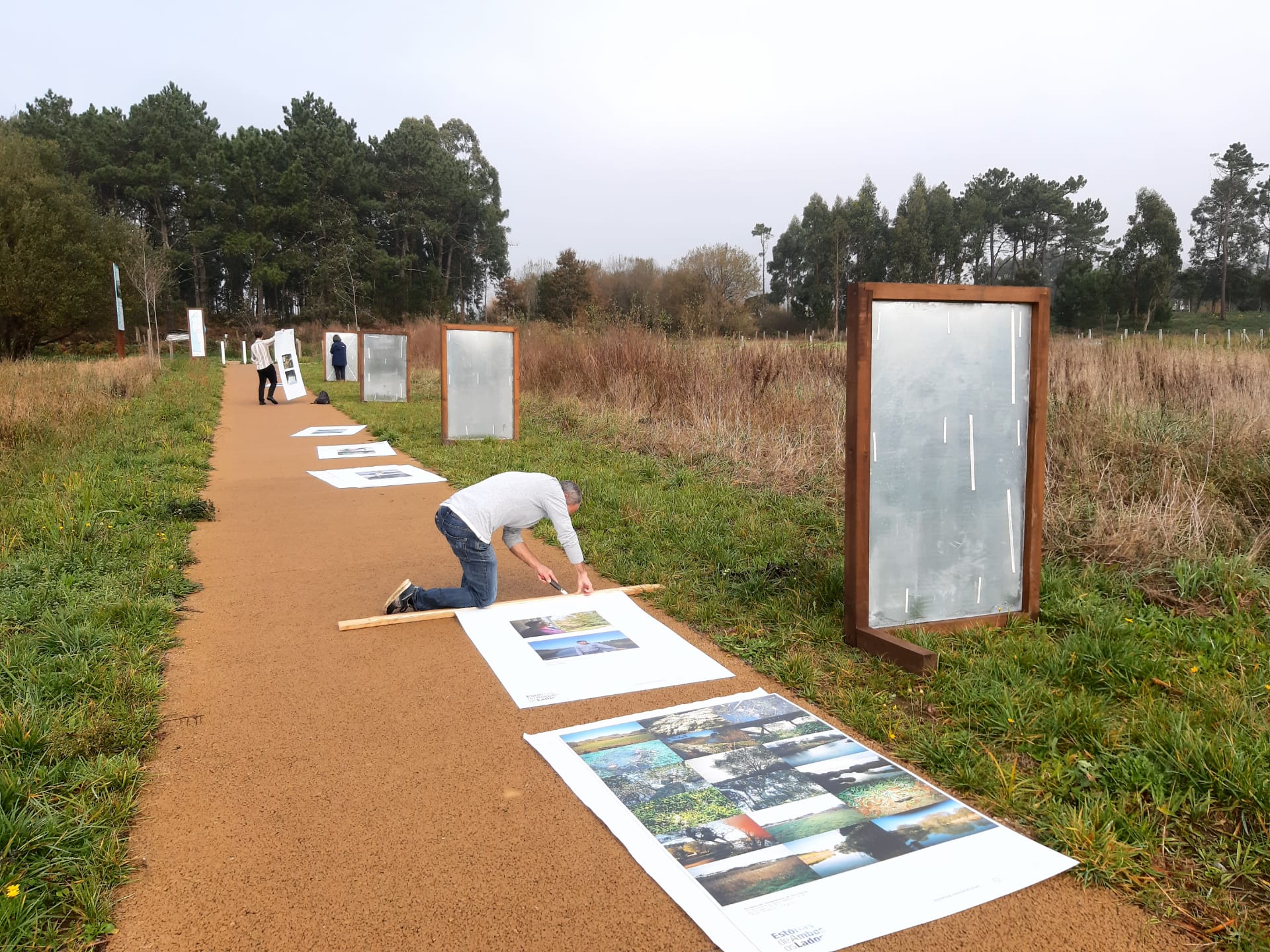“Stories from both sides” aimed to build-up a collective narrative and vision for the Neiva River mouth, in the Northern littoral coast of Portugal, for the redesign of the local population interaction with the natural surrounding protected areas.
The bottom-line was to promote an awareness increase on the fragile ecosystems on each side of the river, towards their valorization and protection.
Viana do Castelo Municipality
Climate-KIC / Cross-KIC, European Institute of Innovation
“Stories from both sides” intended to build-up a collective narrative and vision for the Neiva River mouth, thus pushing forward new ways to foster climate action through the engagement of the local community. This was achieved by looking at local stories that are intrinsically related to the natural context, also as a way to explore the New European Bauhaus policy ambition to triangulate its key dimensions of sustainability, inclusion and aesthetics.
At the end, this project is a contribution to the build-up of a collective response, fostering new conversations grounded in the Neiva river mouth social, cultural, and environmental fabrics.
The project focused on the Neiva River mouth area as the divisive line between two municipalities / cities, Esposende and Viana do Castelo, and two protected areas, Northern Littoral Natural Park and Littoral GeoPark.
The premise was about looking beyond these visible and invisible barriers, and how the existing and similar environmental, cultural, social, and economic values and dynamics should ground this goal.
The methodology employed ethnographic, design and media based approaches, for engaging with the local community of each side, by collecting and sharing stories, photos, and film, towards its convergence for a collective and common (re-)interpretation of the local territory.
This resulted in three main outputs:
- Outdoor Photo Exhibition
- Narrative and Photo Book
- Video Documentary
The following activities were implemented:
- Identification and interviews of local community members;
- Engagement of students from local schools;
- Complementary collection of photos and film;
- Launch and closure events;
- Dissemination and communication.
Implemented by three partners, led by Rio Neiva – Environmental NGO, together with 2 municipalities as partners, from each side of the river, Municipality of Esposende and of Viana do Castelo.
Please highlight how the project can be exemplary in this context
By grounding a storyline to a community context and its relation with the local natural context from a sustainability and climate action perspective.
In particular, the project team defined three strategic keywords to help identify community members whose stories would fall within the project remit: to have a strong relation with the river, with the ocean, and/or with the land.
Please highlight how the project can be exemplary in this context
By building-up visual narratives through the use of photo and video methods for promoting and fostering local conversations.
This means that visual narratives were not only the backbone of the methodological approach, but were also translated into the project outputs.
Please highlight how the project can be exemplary in this context
By engaging with a diversity of community member profiles and experiences whose voices are not usually listened nor inscribed.
In particular, the project identified key members whose experience covered the three strategic keywords (river, ocean and land), and also engaged local students as a way to bring on board a younger generation. Students were also provided analog/film photo cameras to capture their visual perspective of the territory, which were then included in the photo exhibition and book.
Please highlight how this approach can be exemplary
The three dimensions have converged through a participatory process leading to a new way of looking at sustainable development and local natural values through stories, photos and film.
The exemplary approach sits on the importance of grounding the processes of sustainable development within everyday life, emotions, aspirations, expectations, and memories of local communities.
The project's main impact was the kickstart of a new way to look at and debate the existing natural context, by emphasising on the importance of local stories. In fact, community engagement has been a known gap in regards to the wider local sustainable development policies, that was in serious need to act upon. That is also why both municipalities partnered up in this project, by understanding that their own material investments in the area can only achieve the desired transformations, when the local community is also on board.
At the end the following results were achieved:
- 1 Outdoor Photo Exhibition
- 1 Narrative and Photo Book
- 1 Video Documentary
- 21 persons interviewed
- 68 students for on-site visits
- 361 total students engaged
- 158 local inhabitants engaged
- 4 on-site guided visits
> 650 photos taken
> 30 hours recorded video
> 5000 communication reach
Please also explain the benefits that derived from their involvement.
Throughout the project 4 months, citizens were involved at different stages, namely:
- public launch event, where citizens were invited to attend and participate, by telling their own stories to the audience, working as a kickstarter to the project;
- public launch event, where citizens answered a brief survey that helped to ground the storyline, with questions to elicit visual memories and aspirations;
- interviewing a total of 21 persons (with video and audio recording), covering a good diversity of experiences and profiles (such as Seaweed ‘catcher’, Fisherwomen, Canoeing athletes, Local traditional singing women's group, Former (river) water miller, Local baker, Ethnographic and folkloric local association president, Former parish council president, Historian, etc.);
- engaging 68 students through field-visits, as an opportunity to better know their own territory, and also for them to visually capture how they understand and observe it;
- collecting and analysing personal photo archives openly shared by community members that were interviewed, further increasing their engagement and participation, as photos were also used for the project outputs;
- focusing the project outputs on each person that was interviewed, as their photo and/or video is publicly available in the photo exhibition, book, and documentary (all interviewees agreed to this).
Moreover, the project was conceived and implemented by an Environmental NGO, as a well-grounded community-level organisation, founded in 1989 and still managed by local citizens for/with local citizens. In turn, the NGO led a partnership together with 2 municipalities (Esposende and Viana do Castelo).
The project departed from known natural ecosystem fragilities in this area, such as increased human and urban construction pressure, invasive species which dominate the existing landscape, or climate change effects, including increased water levels and flooding which are expected to directly impact the area by 2050.
Within this context, the proposed solution focused on the existing and observed disconnect between the local community and the surrounding natural context, by establishing a mechanism to foster discussions and create a new impetus to preserve the existing biodiversity and to promote a local sustainable development.
We believe the innovative character of the project lies in the following aspects:
- a methodological approach based on personal interviews to engage the local community and to establish a participatory process;
- a methodological approach focused on connecting local stories and memories to climate action, nature conservation and sustainable development;
- the use of visual narratives, through photo and film, as a way of engagement and as a way to produce results that foster debates;
- the establishment of a direct relationship between civil society and public authorities.
Please provide clear documentation, communication of methodology and principles in this context.
The replicability potential lies in the applied methodological approach, as it’s not yet widespread, which the project validated as a relevant engagement process for promoting sustainable development.
It should also be said that all outputs are openly available at the project website, through a Creative Commons Attribution-NonCommercialShareAlike 4.0 International:






@Rio Neiva - Environmental NGO, 2021
Content licensed to the European Union.